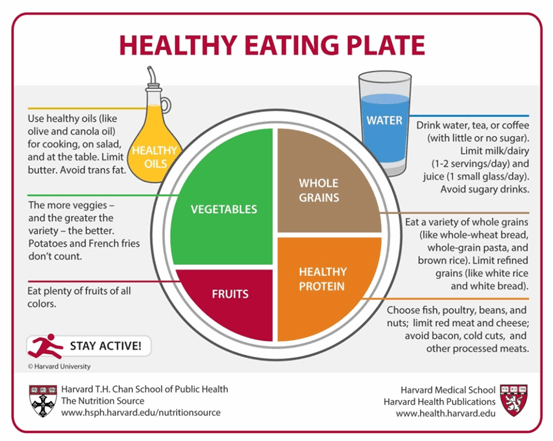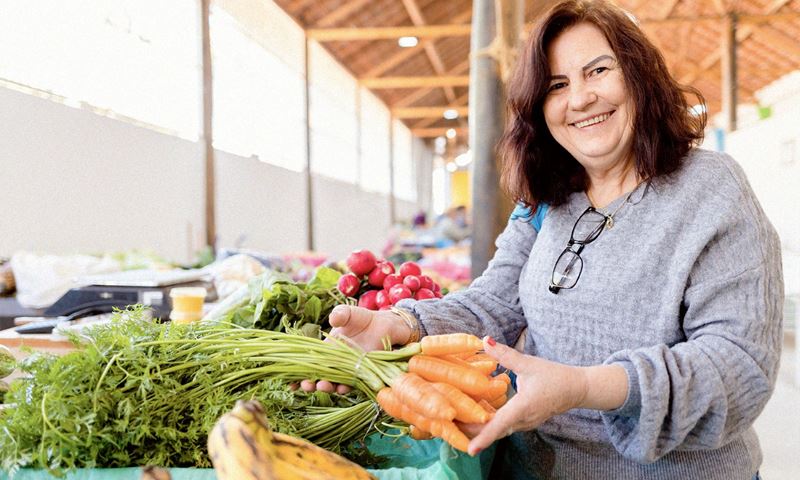Eating right can be tough. Not only do you have to fight off the temptations of sugary sweets and empty carbs, but you have to do so while the daily curveballs of life are getting in the way. Planning a healthy dinner? Life has other plans. Going to have a light breakfast? Not when you have meetings all day and you’re not sure if you’ll even fit lunch in.
Indeed, portion control is a hard skill to master. Since your days of learning the food pyramid, when was the last time you thought about making half your dinner plate veggies? In the business of being an adult, a parent or a carer, it’s all too easy for portion control to fall off your radar. But like anything worth having, the only way to improve is to practice. We have some tips to help with that.
What does your plate look like?
Regardless if it’s lunch on the go or a sit-down dinner, a great rule to keep in mind is to think how what you eat would look on your plate:
- Half your plate - plant based (vegetables, legumes and fruits)
- One quarter - grain or carbohydrate (whole grain pasta, brown rice, potatoes)
- One quarter - protein (cheeses, lean meats, fish, eggs)
By having the right balance of protein, carbs and good fats, you’ll stay fuller for longer and avoid sugar crashes. For a more detailed breakdown you can find out more at the government’s EatForHealth website.
Eyes bigger than your belly?
If you tend to put more food on your plate than you need, or suffer from clean plate syndrome, there are simple ways to trick your brain into consuming less.
- Selecting a smaller plate stops ‘portion distortion’. You’ll still feel satisfied, but consume less.
- Use a bowl. Instead of eating snacks straight from a packet, pop them in a bowl so that you can measure how much you’ve eaten
- Eat mindfully. Have you ever demolished a block of chocolate without even realising? It might sound a little crazy, but practicing mindfulness while eating not only slows you down, but you’ll enjoy your food more too.
- Turn off the TV. In the same realm as eating mindfully, making sure you don’t zone out while you eat means you will feel satisfied more quickly.
- Eat slowly. Give your brain time to catch up with your belly and recognise when it’s feeling full.
Know your serves
Knowing that we’re supposed to have two serves of fruit and five serves of veggies a day is one thing, but understanding how these work ‘on your plate’ with your proteins, grains and dairy to provide different beneficial nutrients and together make up a whole and balanced diet for good health is another.
Average daily serves for a 19 - 50 year old
- Grain – 6 serves men & women
- Vegetables & legumes/beans – 5 serves women, 6 serves men
- Lean Meats, poultry, fish, eggs, nuts and seeds – 3 serves men, 2 ½ serves women
- Dairy/Cheeses – 2 ½ serves men & women
- Fruit – 2 serves men & women
Note: pregnant or lactating women, athletes and taller individuals have different requirements
Handy guide to serving sizes
- 1 serve vegetables = 1 cup green leafy or raw salad vegetables = 1 clenched fist
- 1 serve vegetables = ½ cup cooked vegetables = 1 cupped hand
- 1 serve fruit = 1 medium piece of fruit (eg banana or apple)
- 1 serve fruit = 2 small fruits (eg apricots or kiwi fruits)
- 1 serve meat, fish or poultry = 1 palm of the hand
- 1 serve legumes = 1 cup cooked legumes = 1 clenched fist
- 1 serve grains = 1 slice bread or ½ roll or ½ cup cooked porridge
- 1 serve dairy = 1 cup milk or 2 slices cheese or ¾ cup cup yoghurt
Pick your plate
When you’re plating up your food, keep ‘the plate’ in mind for your portions. At the end of the day (or meal), if you aim to eat whole foods, mostly plants and not too much, where and when you can, you’ll be on the right track.




